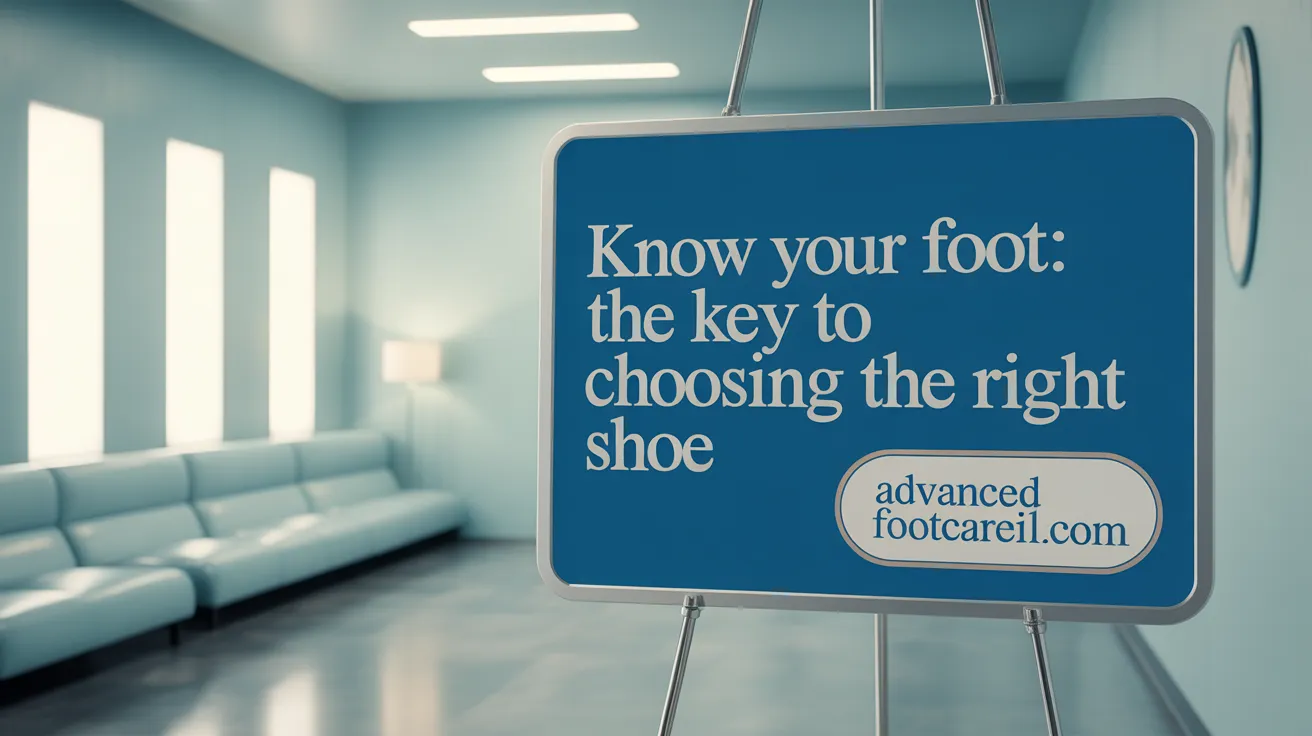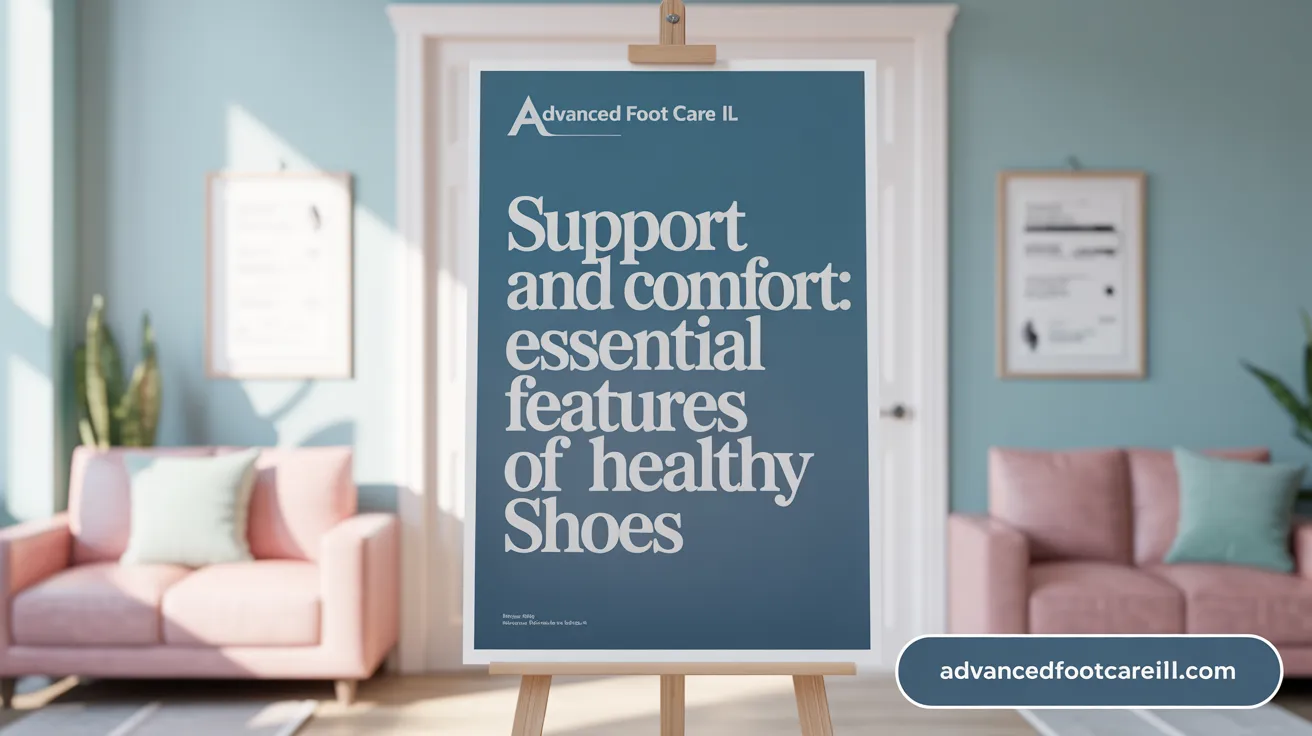Why Your Shoes Matter More Than You Think
Our feet are the foundation of our body, supporting every step we take. Choosing the right footwear is crucial not only to prevent common foot ailments like plantar fasciitis, bunions, and flat feet but also to support overall body alignment and well-being. This guide explores how to select shoes that promote foot health for every day and every activity, helping you avoid pain and injuries while enhancing comfort and mobility.
Understanding Foot Types and Proper Fit: The Foundation of Shoe Selection

Why is knowing your foot type important when choosing shoes?
Knowing your foot type—whether you have flat feet, high arches, or a neutral arch—is essential for selecting shoes that offer the right support and prevent injury. Flat feet often lead to overpronation, which can strain muscles and ligaments; therefore, shoes with motion control or added stability are recommended. High arches require extra cushioning to better absorb shock and reduce discomfort. Meanwhile, neutral arches benefit from shoes with balanced support and flexibility, promoting efficient foot mechanics and reduced strain. For more detailed guidance, see Understanding Your Foot Type and Choosing the right shoes for foot health.
What constitutes a proper shoe fit?
Proper shoe fit begins with measuring your feet, ideally in the late afternoon or evening when foot swelling is at its peak, ensuring the shoes will remain comfortable throughout the day. The shoe should allow about half an inch (roughly the width of a finger) of space in the toe box to accommodate toe movement and prevent pressure points. It should fit snugly around the heel without slipping to provide stability, and the shoe’s width must comfortably accommodate the ball of your foot. Trying shoes on with the socks you typically wear and walking in them helps assess comfort and fit. For comprehensive shoe fit tips, check Proper Shoe Fit Guidelines and 10 Points of Proper Shoe Fit.
Key fitting features to consider
- Toe Box Space: Enough room to allow natural toe splay without crowding. Learn more about Toe Box Importance.
- Heel Snugness: A firm and secure fit that prevents heel slippage. See Firm Heel Counter Benefits.
- Breadth: Sufficient width to avoid pinching, especially at the ball of the foot. Guidance on Footwear for Wide Feet.
When to get fitted
Because feet tend to swell throughout the day, particularly after periods of standing or walking, shoe fittings should take place late in the day. This helps ensure the shoe will remain comfortable during normal daily activities. For more on timing shoe fittings, see Proper Footwear Selection and Tips for Proper Shoe Fitting.
Common mistakes in shoe fit and consequences
Wearing shoes that are too tight, narrow, or lacking appropriate space in the toe box can cause blisters, bunions, corns, calluses, and long-term deformities like hammertoes. Conversely, shoes that are too loose may lead to instability, increasing the risk of falls or sprains. Neglecting proper fit often results in foot pain and can exacerbate common conditions such as plantar fasciitis. It is crucial to avoid relying on shoe size alone; always prioritize actual fit and comfort. Further insights on Common Shoe Mistakes to Avoid and Footwear Mistakes Harming Foot Health are available.
Key Features of Supportive Footwear for Everyday Use

What features should healthy everyday shoes have?
Healthy everyday shoes prioritize foot health by incorporating several critical features. Arch support is essential as it helps distribute body weight evenly across the foot, reducing strain on the arches and preventing discomfort. A firm heel counter provides stability by keeping the heel securely in place, which aids proper foot alignment and prevents excessive movement that could cause injury. Additionally, a roomy toe box is necessary to allow natural toe splay, enhancing balance and preventing deformities like bunions or hammertoes.
Cushioned midsoles play a crucial role in absorbing the impact during walking or standing, protecting joints and reducing fatigue. Modern shoes often feature advanced shock absorption technologies, such as EVA foam or proprietary responsive foams, which further enhance comfort. Breathable materials like leather and mesh uppers promote airflow, keeping feet dry, preventing moisture buildup, and reducing the risk of fungal infections.
What are common shoe mistakes to avoid for foot health?
To maintain healthy feet, avoid several common footwear mistakes. Wearing worn-out shoes can lead to diminished support and cushioning, increasing the risk of injury and foot pain. Choosing fashion over function by favoring high heels or narrow toe boxes can cause or exacerbate issues such as plantar fasciitis, bunions, and chronic foot fatigue. It is vital to select shoes that fit properly; poorly fitting shoes can cause blisters, calluses, and aggravate existing foot conditions. Lastly, neglecting arch support, especially for individuals with flat feet or high arches, can lead to biomechanical imbalances and long-term discomfort.
By focusing on these key features and avoiding common errors, supportive footwear can significantly improve foot health and overall comfort in daily activities.
Choosing Footwear for Specific Activities and Conditions

Which types of shoes are best for athletic, everyday, and prolonged-use scenarios?
Choosing the right shoe depends on your activity and how long you're on your feet. For athletic activities, podiatrists recommend brands like Brooks, ASICS, New Balance, and HOKA ONE ONE. These shoes are known for their excellent cushioning, support, and shock absorption, which help protect your joints and maintain proper body alignment.
For daily walking and general use, brands such as Vionic, Clarks, and ECCO provide built-in orthotic footbeds and durable construction for all-day comfort. If your lifestyle involves standing or walking for long hours, shoes from Dansko, Alegria, and Birkenstock are worth considering because they offer excellent stability, ergonomic design, and superior comfort.
When you need dress shoes that don't compromise foot health, look for brands like Cole Haan and Naturalizer, which combine style and support. These dress shoes feature cushioned footbeds, lower heels to reduce strain, and often incorporate athletic shoe technologies for enhanced comfort.
What footwear considerations are important for foot conditions like diabetes or plantar fasciitis?
People with foot conditions such as diabetes or plantar fasciitis require footwear tailored to reduce complications and support healing. Key features include:
- Extra depth and a wide toe box to accommodate deformities or swelling and prevent pressure points
- Seamless, soft interiors to avoid irritation and blisters
- Anatomical arch support to improve foot alignment and control overpronation
- Enhanced shock absorption to relieve stress on sensitive tissues
- Breathable materials for moisture control and comfort
Brands like Orthofeet, Dr. Comfort, and OluKai specialize in such therapeutic footwear. They design shoes with flexible uppers, padded interiors, and ergonomic soles that help alleviate pain and promote proper biomechanics. Transitioning gradually to new footwear combined with regular foot inspections supports healthier outcomes for these conditions.
What activity-specific footwear features should you consider?
Different activities demand specific footwear attributes:
- Athletic shoes require stable soles, cushioning (often with responsive foam technologies), arch support, and breathable uppers.
- Everyday walking shoes benefit from durable soling, built-in orthotics, and a roomy toe box for comfort.
- Long hours on feet require shoes with a stiff heel counter, ergonomic footbeds, slip resistance, and adequate shock absorption.
- Dress shoes should have low heels, cushioned insoles, and flexible uppers to reduce foot fatigue.
- Outdoor or hiking shoes need traction, ankle support, weather resistance, and durable tread patterns.
How do specialized orthopedic and ergonomic shoes benefit foot health?
Orthopedic and ergonomic shoes are designed to support foot function and provide comfort, especially for those with pain or foot deformities. Key benefits include:
- Anatomical arch support that improves alignment and reduces strain
- Extra depth, wider toe boxes, and stretchable materials to reduce pressure points
- Seam-free interiors to protect sensitive or neuropathic feet
- Ergonomic cushioning soles that absorb shock and aid natural foot motion
These features help to manage conditions like plantar fasciitis, bunions, arthritis, and diabetic neuropathy. Brands like Orthofeet and FitFlop offer shoes engineered by podiatrists and biomechanical experts to optimize foot health and mobility.
By selecting footwear tailored to your activities and specific foot needs, you can prevent injuries, reduce pain, and maintain healthy feet over time.
Footwear’s Role in Preventing and Managing Foot Pain and Injuries

How does proper footwear prevent common foot and back problems?
Supportive footwear is vital for preventing foot problems such as plantar fasciitis, bunions, and chronic foot fatigue. Shoes designed with cushioning, arch support, and a firm heel counter help reduce strain on the muscles, ligaments, and joints. This support promotes proper alignment, which not only protects the feet but also reduces stress on the back and hips, preventing pain in these areas.
Why is replacing shoes regularly important?
Footwear wears down over time, losing its cushioning and structural integrity. Experts recommend replacing shoes every 300–500 miles or about every 6 to 12 months. Worn-out shoes fail to absorb shock adequately, which increases the risk of foot injuries. Signs like worn soles, diminished arch support, and uneven treads indicate it’s time for new footwear to maintain proper foot health.
How can insoles, orthotics, and ergonomic shoes help?
Insoles and orthotics provide additional arch support and help correct foot misalignments, easing pressure points and preventing pain. Ergonomic shoe designs focus on cushioning, flexibility, and lightweight construction to enhance comfort for extended standing or walking. Such designs reduce foot fatigue and support natural foot movement.
What safety features are important in footwear?
For safety and injury prevention, shoes with slip-resistant soles reduce the risk of falls, especially in slippery environments. Protective toe boxes or reinforced toe caps can guard against injuries from impacts or heavy objects. These features are essential for those working in environments that demand both support and protection.
Proper, supportive footwear with appropriate safety features and timely replacement plays a crucial role in preventing foot injuries and managing pain effectively.
Practicing Healthy Foot Habits Beyond Footwear
How does good foot hygiene support foot health?
Maintaining proper foot hygiene is fundamental to preventing infections and ensuring overall foot health. Washing your feet daily with mild soap and thoroughly drying them, especially between the toes, helps prevent fungal infections such as athlete's foot. Regular trimming of toenails straight across reduces the risk of ingrown nails, which can be painful and prone to infection. Wearing moisture-wicking socks and rotating your shoes daily decreases moisture buildup, limiting the growth of bacteria and fungi.
Avoiding walking barefoot in potentially contaminated environments, particularly where soil or surfaces may harbor parasites like hookworms, reduces the risk of infections. For those who visit salons, ensuring those establishments sterilize instruments properly can prevent infection from pedicures (safe foot care practices).
When should individuals seek professional foot care?
If you experience persistent foot pain, skin problems like sores or infections, or structural issues such as deformities, it is important to consult a podiatrist. People living with diabetes or arthritis should have regular foot exams to monitor and prevent complications, given their increased vulnerability to foot ailments (foot care for diabetic patients, footcare and footwear for arthritis).
Professional podiatric care offers targeted advice on proper footwear to support foot health and can include prescription of custom orthotics for improved foot function and pain management (custom orthotics benefits). Early diagnosis and ongoing foot care help avoid serious conditions and maintain mobility and comfort.
Additional healthy foot habits
- Perform daily foot inspections to detect early signs of problems like cuts, swelling, or discoloration.
- Use comfortable, breathable socks and change them daily.
- Rotate shoes to allow time for drying out and maintaining hygiene.
- Moisturize feet regularly to prevent dry, cracked skin (healthier feet tips).
- Avoid ignoring foot pain or discomfort; seek timely medical attention when symptoms appear.
Adopting these practices complements supportive footwear choices and forms the foundation for long-term foot health and well-being.
Stepping Towards Healthier Feet Every Day
Choosing the right footwear supported by good foot hygiene and proactive care is fundamental to maintaining healthy feet and overall well-being. Understanding your foot type, selecting shoes with essential supportive features, and matching footwear to your lifestyle can help prevent pain, injury, and chronic conditions. Regular replacement of worn shoes, combined with mindful foot care and professional consultations when necessary, ensures your feet remain strong and comfortable. With the right steps today, you pave the way for a healthier, more active tomorrow.
